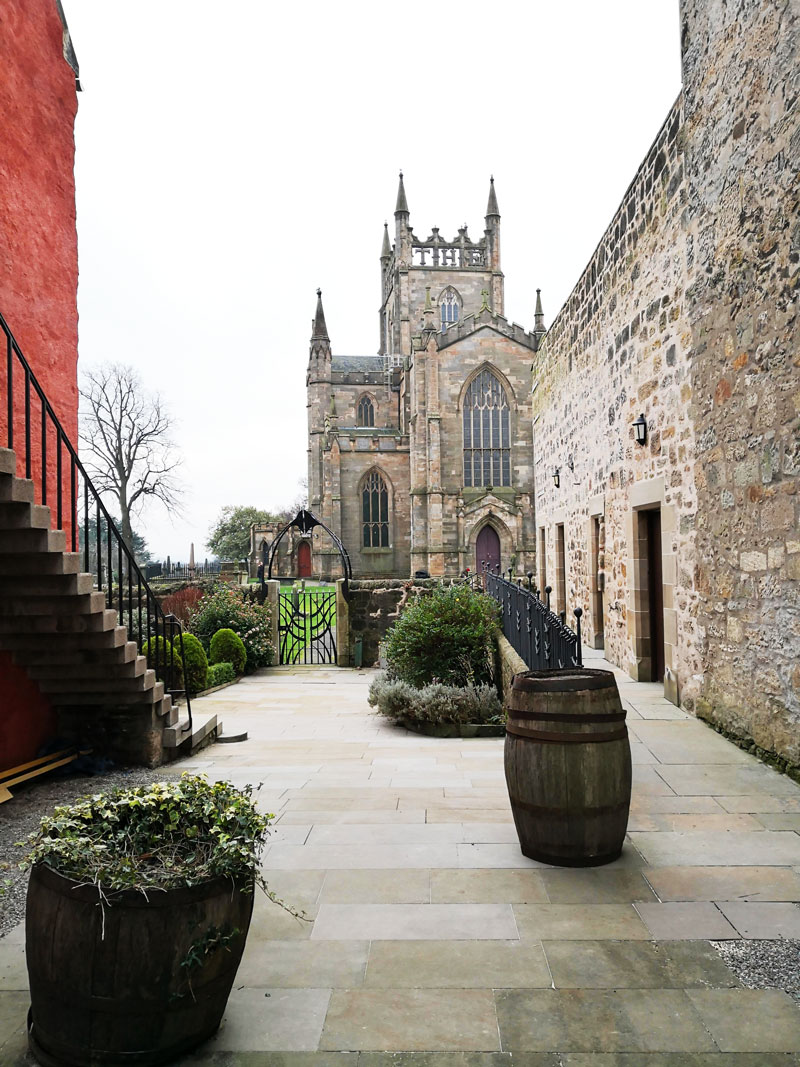Dunfermline – An Old Capital – A Brief Historical Tour

King Malcolm III (1058- 93) shifted the centre of Scotland’s government from Forteviot to Dunfermline in the mid-11th century. The ruined foundations of his tower sit on a peninsula rock outcrop in what is now called Pittencrieff Park. Dunfermline’s motto ‘Esto rupes inaccessa’ (May the rock be inaccessible) fits the fortified building’s ancient purpose.
The siting of Malcolm’s Tower was close to a religious centre which had begun as a Culdee establishment in the 9th century. Malcolm and his wife, Queen Margaret, founded a priory, The Church of the Holy Trinity, supporting Benedictine monks to create the first Benedictine Order and community in Scotland. Their son, David I (1124-53) gave the church abbey status which involved rebuilding the church as an abbey on a grand scale and style, akin to Durham Cathedral. Dunfermline Abbey becomes a masterpiece of Romanesque architecture, and this marks the beginning of the Europeanisation of the Scottish church.
Dunfermline Abbey was the principal royal mausoleum from the later 11th to the 14th century. As the final resting place of Robert the Bruce (bar his heart which is buried at Melrose Abbey), the tomb of the Bruce at Dunfermline Abbey has enduring symbolic significance for Scotland as a nation.
To the side of the abbey is a 13th-14th-century guest house transformed into a royal palace in the mid 1500s. This was a residence of James VI and his wife Anne of Denmark, and the birthplace of their children, Elizabeth of Bohemia (‘The Winter Queen’) and Charles I. In 1787 our poet Robert Burns visited a gravestone, reputedly that of King Robert Bruce, and kissed it.
We are unsure of why more people don’t visit historic Dunfermline. It has this and so much more to offer…
Notes:
Culdees were clerics who lived like monks but who did not take the vows of a monastic order. Though only the nave of the early abbey survives, it remains the largest and most complete Romanesque church surviving in Scotland.
Iain Stewart – February 2 2024





